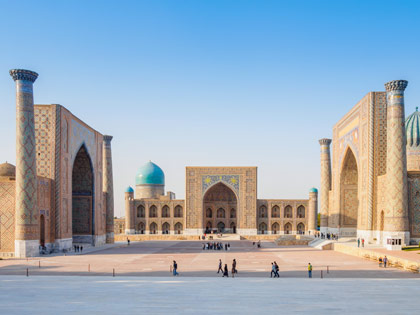Kazakhstan Culture

Kazakhstan culture reflects the history of the nomadic tribes which roamed the Kazakh steppe forming their unique worldview, creating eclectic customs and traditions, and mixing with neighboring cultures. Many Kazakhs adopted a more sedentary lifestyle in the 19th and 20th centuries, leading to the development of new cultural characteristics for Kazakhs, such as huge, glittering, modern cities. Today, Kazakhstan culture represents the peoples of large swaths of Central Asia, capturing this nomadic spirit in various types of arts and traditions.
Kazakh Yurt
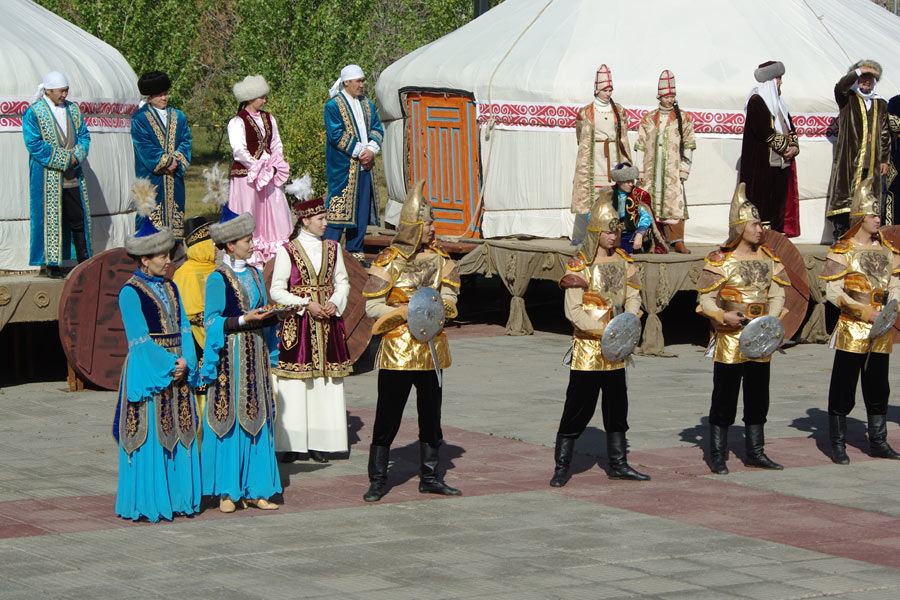
Kazakh yurt is a portable dwelling, which nomads can quickly and easily assemble then disassemble to load onto horses or camels as they seek new pastures. For Kazakhs, the yurt is truly a home–a symbol of comfort, connection with the earth and the universe, and reminder of the nomadic past. It consists of three connected elements: kerege (latticework) form the walls of the yurt, yuk (domes of poles) the roof of the yurt, with shanyrak (peaks) serving as a skylight. Yurts are so revered that shanyrak are depicted on the National Emblem of Kazakhstan.
Kazakh Horse Games
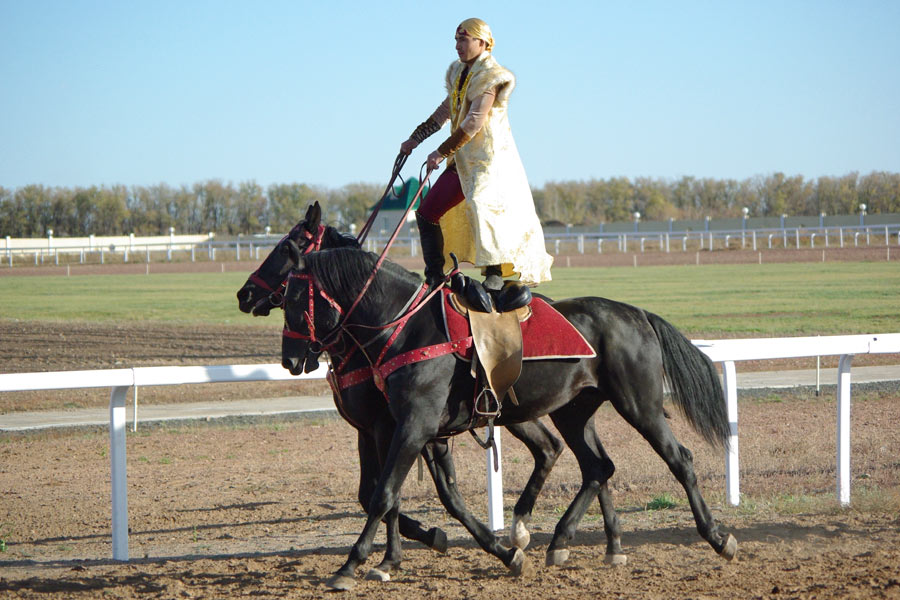
The ability to stay in the saddle is an integral part of nomadic life. Riders can showcase their skills in the various kazakh horse games that have become traditional on the Kazakh steppe. Kokpar, with its Central Asian counterparts Kok-Bar (Kyrgyzstan), Kupkari (Uzbekistan), and Buzkashi (Tajikistan), is the most popular horse game in Kazakhstan. The team version of Kokpar, called Ulak, is the struggle for the carcass of a ram, which must be scooped up at a gallop and dragged to a certain place without giving it away to rivals. Alaman Baiga, a long-distance racing game in which only local breeds of horses are allowed, can cover distances of 10, 20, 50 or even 100 kilometers. "Kyz Kuu" is another Kazakh favorite–in this game, a man must to catch up with and kiss a girl.
Kazakh Clothes
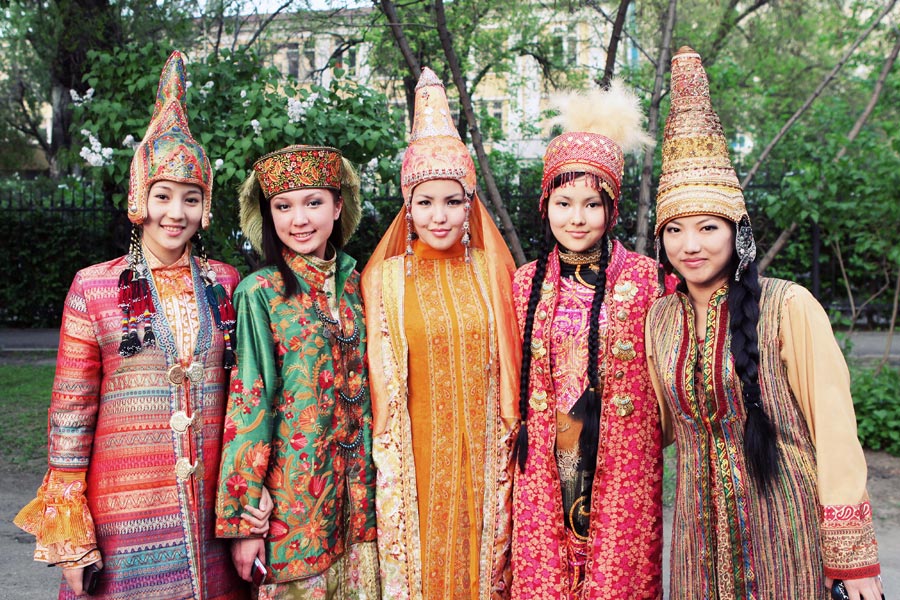
Kazakh clothes are an easily identifiable part of Kazakhstan culture. Although seeing people in traditional Kazakh clothes is becoming rarer–except in remote areas or on holidays—in the past, representatives of all classes wore the same clothes. Differences in class were noted only in the quality of decoration and ornamentation. Traditional men’s clothing consists of a capana (bathrobe with a belt) and a headdress, which can be a skullcap, cap, or fur hat (depending on weather or the type of event). Women's clothing consist of special dresses and a wedding headdress called a “saukele”. After the birth of a child, the saukele is replace by a white shawl, called a “kimeshek”, which is wrapped around the head in a special way.
Kazakh Music
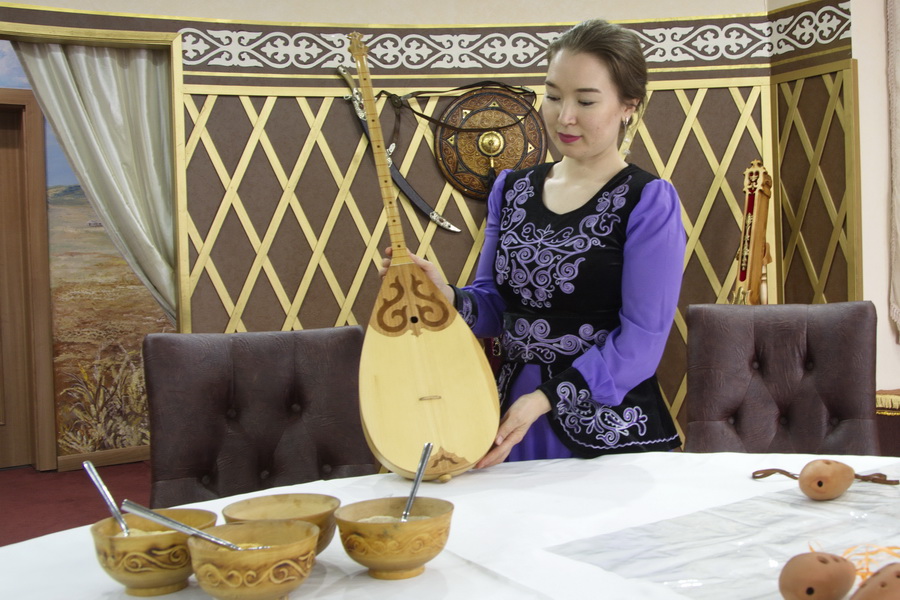
Kazakhstan’s musical heritage is based on folklore and historically had no musical notation–the heavily improvised music was passed from teacher to student, generation to generation. Kui, a uniquely Kazakh genre in which a musician performs on the dombra (a plucked Kazakh instrument) and sings stories from epics, legends, and fairy tales, became popular in the 15th-17th centuries. The most famous performer of kui was the 19th century musician Dauletgerei. At the beginning of the 20th century, a classical music academy was founded to draw upon Russian and European styles while weaving in traditionally Kazakh motifs.
Literature of Kazakhstan
Kazakhs are big fans of storytelling and poetry. A passion for poetry has been a part of Kazakh culture for millennia–legends have been told and retold. The most famous epics are the classic “Korkyt-ata” and “Oguznam”. Kazakh poets in the Middle Ages usually told their works accompanied by dombra or kobyz (plucked musical instruments), and arranged reading competitions called "aytyz", which resemble modern rap-battles. The written literary tradition of Kazakhstan only goes back to the 19th century. Abai Kunanbayev, whose name adorns settlements, streets, theaters, schools and universities in Kazakhstan today, stands out among the writers of that time.
Crafts of Kazakhstan
The nomadic way of life, which became the basis of Kazakhstan culture, left its mark on folk crafts. Traveling from place to place, people created everything they needed for a long stay on the road. Underlining the transient nature of the people, Kazakh crafts are highlighted by essentials for survival and creating coziness on the road: woodworking, felt for upholstering yurts, and the creation of horse riding equipment. In the harsh climate of the steppe, where the summer is very hot and the winter winds are unbearably cold, the Kazakhs developed handicrafts for making warm fur coats and hats made of leather and animal fur. Blacksmithing and jewelry making were also widespread.
Kazakhstan has successfully integrated into the world community during the 21st century but has also worked tirelessly to carefully preserve folk traditions and customs. The knowledge and ways of life of the ancient ancestors who conquered and roamed the Kazakh steppe are still passed down from generation to generation. Travelers can learn more about Kazakh culture in the country’s numerous museums or during festivals and holidays.


